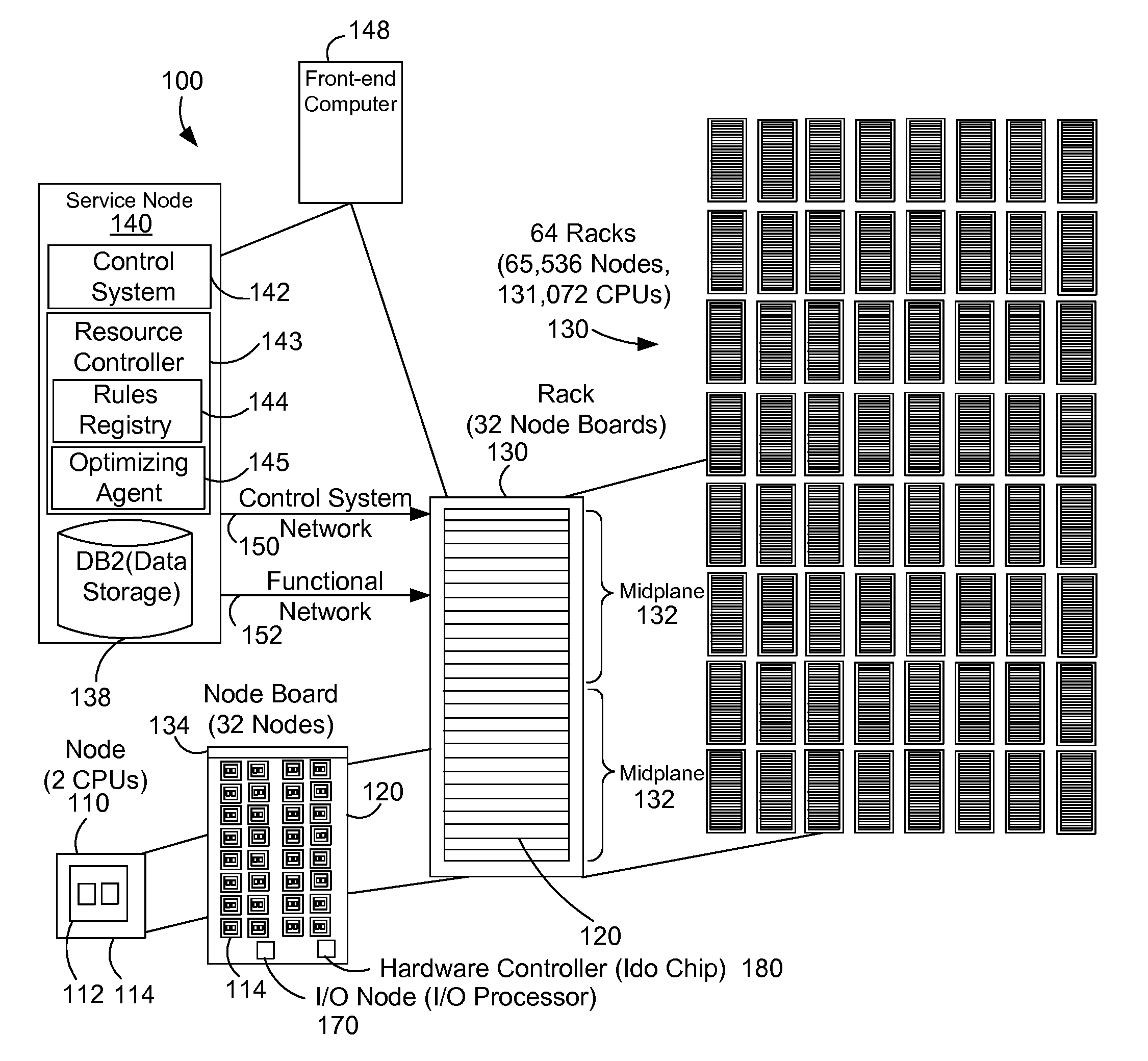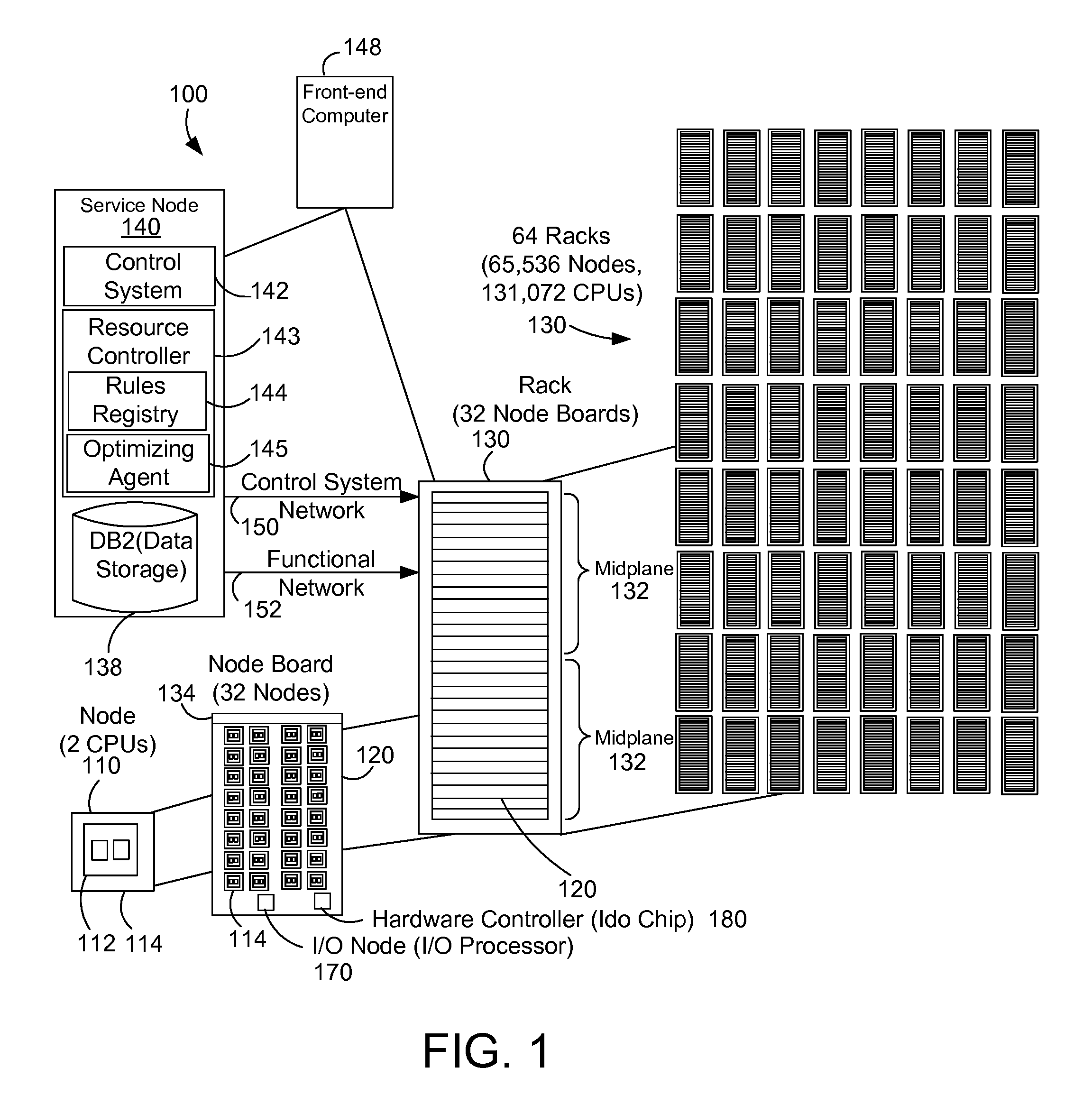Dynamic resource adjustment for a distributed process on a multi-node computer system
a computer system and distributed process technology, applied in multi-programming arrangements, instruments, knowledge representation, etc., can solve problems such as inability to respond to inability to adjust compute resources, and inability to meet current needs or current job priorities
- Summary
- Abstract
- Description
- Claims
- Application Information
AI Technical Summary
Problems solved by technology
Method used
Image
Examples
Embodiment Construction
[0020]The specification and claims herein are directed to dynamically adjusting the resources available to a processing unit of a distributed computer process executing on a multi-node computer system. The resources for the processing unit are adjusted based on the data other processing units handle or the execution path of code in an upstream or downstream processing unit in the distributed process or application. The examples herein will be described with respect to the Blue Gene / L massively parallel computer developed by International Business Machines Corporation (IBM).
[0021]FIG. 1 shows a block diagram that represents a massively parallel computer system 100 such as the Blue Gene / L computer system. The Blue Gene / L system is a scalable system in which the maximum number of compute nodes is 65,536. Each node 110 has an application specific integrated circuit (ASIC) 112, also called a Blue Gene / L compute chip 112. The compute chip incorporates two processors or central processor u...
PUM
 Login to View More
Login to View More Abstract
Description
Claims
Application Information
 Login to View More
Login to View More - R&D
- Intellectual Property
- Life Sciences
- Materials
- Tech Scout
- Unparalleled Data Quality
- Higher Quality Content
- 60% Fewer Hallucinations
Browse by: Latest US Patents, China's latest patents, Technical Efficacy Thesaurus, Application Domain, Technology Topic, Popular Technical Reports.
© 2025 PatSnap. All rights reserved.Legal|Privacy policy|Modern Slavery Act Transparency Statement|Sitemap|About US| Contact US: help@patsnap.com



